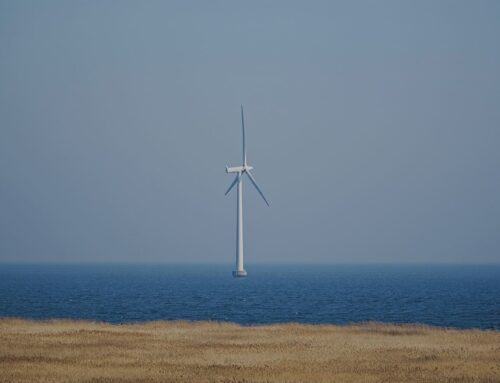International Collaboration Driving Advancements in Geothermal Technology
February 9, 2025
ByFelicity Bradstock– Feb 09, 2025, 12:00 PM CST
- Geothermal energy is gaining global attention and investment as a key renewable energy source, with various countries and institutions exploring its potential to reduce reliance on fossil fuels.
- Technological advancements and government support are driving the expansion of geothermal energy production, with significant projects and discoveries being announced worldwide.
- Southeast Asian countries like Indonesia and The Philippines are aiming to substantially increase their geothermal energy capacity to support their green energy transitions, despite facing challenges.

As governments and the private sector explore ways to expand renewable energy capacity around the globe, they are paying greater attention to the potential of geothermal energy. Having been overlooked for several decades, largely due to the absence of the technology required to meaningfully harness its power, several scientific institutions now believe they can access huge amounts of clean geothermal energy to support a green transition.
Geothermal energy is heat within the earth. There are a variety of geothermal energy systems, including direct use and district heating systems, geothermal power plants, and geothermal heat pumps, that use either the earth’s high temperatures near the surface or drill miles down to access higher temperatures. Geothermal energy can be used for heating and cooling, as well as to generate clean electricity.
‘;
document.write(write_html);
}
In the U.S., geothermal energy seems to be one of the few renewable energy sources gaining support from President Donald Trump. The industry has been steadily growing for several years, with the Biden administration’s Inflation Reduction Act (IRA) providing high levels to the sector. The U.S. Department of Energy’s (DoE) Geothermal Technologies Office (GTO) has been working to improve the technologies required to tap into geothermal energy, as well as drive down costs, with significant progress seen in recent years.
Chris Wright, Trump’s choice for U.S. Energy Secretary, is the founder of oilfield services company Liberty Energy, which invested in the geothermal power start-up Fervo Energy in 2022. Wright said upon taking his new government role that he would cut financial ties with Fervo to avoid any conflict of interest but emphasised his support for geothermal energy. Wright said, it is a “tremendous potential energy source”. He added, “I’m still passionate about it… I’m going to be a champion for it.” This support provides hope for greater progress in a sector that is currently under threat.
This month, the U.K. announced a new geothermal energy storage project, backed by energy regulator Ofgem’s Strategic Innovation Fund. The project builds upon recent geothermal research at the University of Leeds, which assesses how subsurface heat storage can help provide clean electricity. The University of Leeds’ Geogrid project is being run by the virtual institute Geosolutions Leeds, alongside Northern Powergrid, LCP Delta, E.ON Next, Leeds City Council, and Star Refrigeration.
Several U.K. universities are exploring the potential for geothermal energy, with the Heriot-Watt University in Scotland and Taiwan’s National Central University working together to advance research on the clean energy source. The two institutions signed a Memorandum of Understanding to share equipment and facilities, co-supervise PhD students, develop joint industry projects, and partner in several other areas to improve our understanding of geothermal energy technologies. The U.K. government also published its “Future of the suSubsurfacereport in October, which explores the potential for harnessing geothermal energy.
In the EU, Finland announced a groundbreaking discovery last year of a geothermal energy source with the potential to sustain 20 million years. The mine may be able to provide huge quantities of clean energy. In January, Finland’s first geothermal heating plant in Vantaa commenced operations. The facility will produce around 2.6 GW of clean power annually, enough to heat around 130 homes.
France also announced plans to develop its geothermal energy sector last year, as the Ministry of Energy Transition published a development plan outlining 27 priority actions. The report explores how geothermal energy could provide renewable heating and cooling to buildings in France.
In Asia, some countries are also looking to tap into geothermal resources as they strive for a green transition. Both Indonesia and The Philippines hope to expand their geothermal energy use to reduce their reliance on fossil fuels. However, they face many challenges in achieving this aim, including financing issues, governmental rules, and community protests. Both Southeast Asian countries have strong potential to tap into geothermal resources as they are hotbeds of volcanic activity, making it easier to access the clean energy source.
Geothermal energy production in Southeast Asia is expected to grow by around tenfold in the coming decades, to reach 276 million megawatt-hours by 2050, according to the International Energy Agency. Indonesia and The Philippines are the second and third-biggest geothermal energy consumers worldwide, after the U.S. However, Indonesia uses less than one-tenth of the energy available from its extensive geothermal reserves. Just 6 percent of the country’s power comes from geothermal sources. Meanwhile, The Philippines has developed just 8 percent of its geothermal resources, which contributes around 14.6 percent of the country’s energy supply.
The two states are looking to significantly expand their geothermal energy sectors to support a green transition in the coming decades. Indonesia plans to increase production by at least 8 percent by the end of the decade, while The Philippines hopes to increase its geothermal capacity by almost 1.5 GW and nearly double its current use.
By Felicity Bradstock for Oilprice.com
More Top Reads From Oilprice.com
Search
RECENT PRESS RELEASES
Related Post



